Maths, Physics, Chemistry, Biology, French, English, Geography, History, Piano, Computer Science and Coding
Don't wanna be here? Send us removal request.
Text
Describing pets 🐩🐈🐠 - French
For more information on pets in French, check out my previous post: Pets - French
TIP: My [noun] - my is 'mon' when the noun you're referring to is masculine, and 'ma' when the noun you are referring to is feminine
Saying your pet's name
Frame: Mon/Ma [pet] s'appelle [name]
Examples:
FR: Mon chien 🐶 s'appelle Bruce. EN: My dog is called Bruce.
FR: Ma tortue 🐢 s'appelle Maryana. EN: My tortoise is called Maryana.
Saying your pet's age
Frame: Mon/Ma [pet] a [number] ans.
Example:
FR: Mon chat 😸 a neuf ans. EN: My cat is nine years old.
In French, when we talk about our/someone's age, we say how many years we have. So the literal translation of 'mon chat a neuf ans' is actually 'my cat has nine years'.
Describing your pet
Frame: Mon/Ma [pet] est [adjective].
Here's a list of adjectives you can use:

The pink letters are what you need to add to the adjective for it to be in its feminine form, as feminine nouns need feminine adjectives
If there are none, it means the adjective it remains the same for both masculine & feminine forms
Example:
FR: Ma souris est mignonne. EN: My mouse is cute. (It's 'mignonne' since 'souris' is a feminine word)
No pets
And last of all, but definitely not the least, if you have no pets, you can say:
FR: Je n'ai pas d'animaux domestiques. EN: I don't have pets.
44 notes
·
View notes
Text
Pets! 🐶😽🐟 - French
TIP: All French nouns have a gender (feminine or masculine) and when referring to a noun, we have to use a determiner (for example, you cannot just say 'cat', you have to say 'a cat', 'the cat', 'my cat', etc.)
TIP 2: 'le' is the masculine form of 'the' & 'la' is the feminine form, and when the noun it's referring to begins with a vowel, le/la contracts into l' for example la orange (the orange) -> l'orange 🍊
Pets
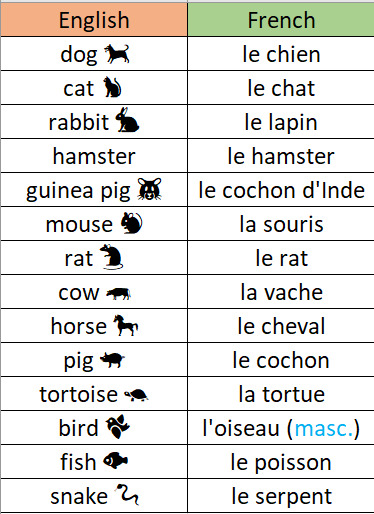
I'll be posting about Describing Pets in French soon! stay tuned 🤗💝
64 notes
·
View notes
Text
Women 👩🏼👩🏾🦰 - late 19th & early 20th century - History
In some the ways the status of women improved during the late 19th and early 20th century...
The custody of children improved after the Caroline Norton case
After Caroline (image of her🔽) separated (she wasn't allowed to divorce) from her violent husband, she was banned from seeing her children. She wrote pamphlets protesting against the unfair laws, which helped get the Marriage and Divorce Act of 1857 passed - giving women more rights when it came to children and marriage
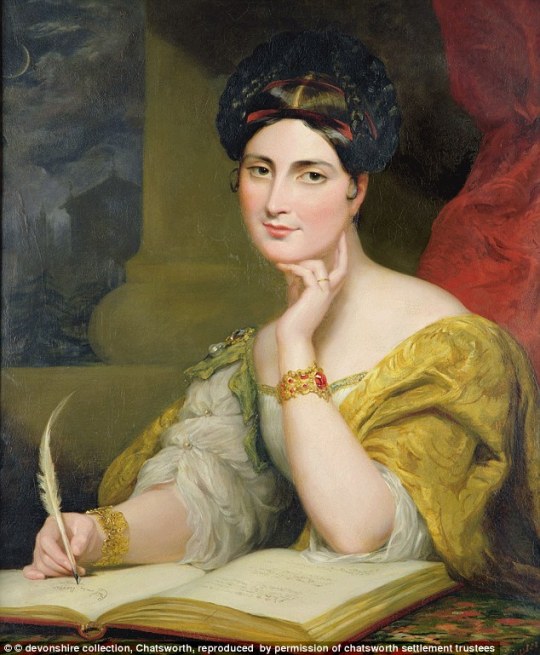
There were more employment opportunities for women, such as nursing, clerical work, shop work, etc.
Married Women's Property Acts of 1870 & 1882 - improved married women's rights
Cooperative Women's Guild (1884) campaigned for women worker's rights, divorce reform and better schools and pensions
By 1901, some women were allowed to vote in local elections
But in some ways, the position of women in society at the time was still really bad...
Women's legal status was still limited, more so after marriage. The reforms helped, but didn't fully solve the problem
Working women were payed much less than men, conditions for factory work were awful, and women who didn't have a husband/family were exploited
Contraception (deliberate use of artificial methods/techniques to prevent pregnancy after sexual intercourse) was limited & primitive - many women spent much of their adult life pregnant
Giving birth was dangerous at the time - approximately 500 - 1000 women died per 100,000 births
Women's reform groups were seen as a threat - many articles were written against it, dubbing them as the 'New Women'
48 notes
·
View notes
Text
Types of energy transfer ⚡🔀 - Physics
You can read more about energy stores in my previous post - Energy Stores ⚡🏪 - Physics! 😊
What is energy transfer?
When we talk about energy transfer, we talk about energy from one energy store being transferred to another
Energy can remain in the same store for millions of years or just a fraction of a second
There are energy transfers happening all the time - every time there is a change is a system (an object/group of objects), there is a change in the way energy is stored
Transferring energy
There are four types of energy transfer:
Mechanical work 🦾 - the energy transfer of a force moving an object through a distance
Electrical work ⚡- energy transferred by charges moving due to a potential difference
Heating 🔥 - thermal energy transferred from a hotter 🔥region to a cooler 🧊 region
Radiation - energy transferred via waves (e.g.: sound 🔊 waves, light 💡radiation, infrared (heat) radiation)
Example of energy transfer: A falling ball
You are holding a metal ball that doesn't bounce. You drop it...
While the ball is falling:
The gravitational potential energy of the ball decreases 📉 AS
The kinetic energy of the ball increases 📈
As the ball is falling, some energy is transferred to the thermal energy of the surroundings (air)
When the ball hits the ground:
The gravitational potential energy of the ball hits zero AND
The kinetic energy of the ball hits zero AS
Energy is transferred to the surroundings via sound waves (there's a noise when the ball hits the ground) and heat (thermal energy store of surroundings 📈)
67 notes
·
View notes
Text
Fun fact - The truth of algae
Algae are simple aquatic organisms that make their own food via photosynthesis. Their cells are very similar to plant cells - in fact, for centuries, they were classified as plants, but now they are classified as part of a different kingdom - the protista
So basically, algae are not plants, they are protists!

Seaweed (algae) under microscope - magnification X100
67 notes
·
View notes
Text
Resolving power and magnification - Biology
Resolving power
It is a measure of the min. distance two points can be from each other before appearing as one through an optical instrument
The resolving power of an optical instrument (e.g.: microscope) refers to its ability to distinguish between two very close images/points - in short, resolving power affects how much detail the optical instrument can show
For example, a microscope with a resolving power of 200 nm (nanometres) means that any two points closer than 200 nm would appear as one point when observed through that microscope
Magnification
Magnification is the process of enlarging the apparent size of an object or image, not its physical size
It allows us to see objects in greater detail by making them appear larger
For example, a microscope with a magnification of X1000 would allow us to see a 0.5 mm (millimetre) object as 500 mm (5 cm)
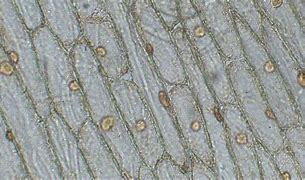
An image of (living!) onion cells 🧅 looked at through a microscope with X300 magnification
69 notes
·
View notes
Text
Masculine & Feminine - French
All French nouns are either masculine or feminine
'le' and 'la' both mean 'the' in French, but 'le' is used for masculine nouns and 'la' is used for feminine nouns
E.g.: The noun 'house' (maison) in French is a feminine noun, so when referring to it, we say 'la maison', not 'le maison'
The same goes for words like 'a' (un, une), 'my' (ma, mon), and even adjectives! (masculine adjectives to describe masculine nouns, feminine adjectives to describe feminine nouns)
E.g.: A big house.
We know 'house' (maison) is feminine, so we use 'une' instead of 'un'
Big in French can either be grand (masculine), or grande (feminine), but in this case, since we're describing a feminine noun, we use 'grande
Conclusion: A big house -> Une grande maison
FUN FACT: Most feminine nouns in French end with 'e'. The word 'house' used in the examples above is an exception - but the next time you see a French noun ending with 'e' you can (almost!) safely assume it's feminine
E.G.: la bouche (mouth), la vache (cow), la chaise (chair), and hundreds more that I'm too lazy to type!

83 notes
·
View notes
Note
Why are some elements metalloids?
It's because some elements have both metallic and non-metallic properties. Hope this helped! 😁
63 notes
·
View notes
Text
The Periodic Table - Chemistry
The chemical symbols are shown in the periodic table, where all the elements are displayed in order of atomic number (the number of protons in the nucleus of an atom)
The elements in the table are arranged in columns called groups - each group contains elements with similar chemical properties
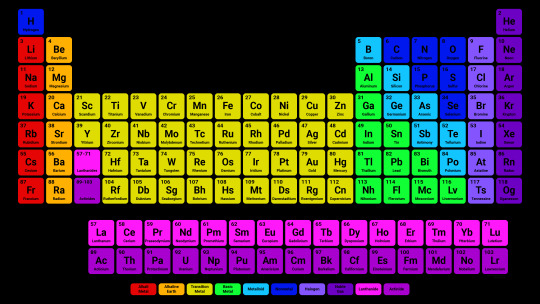
Zoom in on the image - the elements are colour-coded - you'll see which elements are metals, metalloids, non-metals and more!
#new account#repost#chemistry#periodic table#elements#metals#metalloids#chemical symbols#non-metals#gcse
150 notes
·
View notes
Text
Chemical Symbols - Chemistry
The name of an element depends on the language being spoken
However, the world of science forms a global 🌍community
That is why we have chemical symbols; universal 1 or 2 letter symbols each representing an element - so every scientist, no matter what nationality can understand! 😄
88 notes
·
View notes
Text
Atoms, Elements and Compounds - Chemistry
All substance are made from tiny particles called atoms
There are about 100 different types of atom found naturally on Earth
Atoms can combine in a huge variety of ways, creating all sorts of substances (e.g.: water, carbon dioxide, hydrogen peroxide)
Some substances are made up of only one type of atom; these substances are called elements
Some substances are made up of more than one type of atom; these substances are called compounds
87 notes
·
View notes
Text
*Magnetic energy store - the energy stored when repelling poles are pushed closer to each other and attracting poles are pulled further away from each other 🧲
The original definition was inaccurate... 😅
Energy Stores ⚡🏪 - Physics
Magnetic energy store - the energy stored when poles attract or repel 🧲
E.g.: Fridge magnets, compasses, maglev trains which use magnetic levitation
Internal (thermal) energy store - the total kinetic and potential energy of the particles in an object aka the kinetic energy/vibrations of particles. Hotter object 🔥-> MORE internal energy (particles vibrate faster)
E.g.: Human bodies 🤾🏼, hot coffees ☕, stoves or hobs. Ice particles 🧊 too, just they vibrate slower.
Chemical energy store - the energy stored in chemical bonds, like the bonds between molecules
E.g.: Food, fuel, certain chemicals found in batteries
Kinetic energy store - the energy store of a moving object
E.g.: Any moving object, really
Electrostatic energy store - the energy stored when charges (protons+ & electrons-) attract/repel
Elastic potential energy store - the energy store of an object that is being squashed/stretched
Gravitational potential energy store - the energy of an object above the surface of the Earth 🌍 - the higher the object is, the higher its gravitational potential energy
E.g.: Planes ✈️, cups on tables 🍺, birds 🕊️, etc.
Nuclear energy store - the energy stored in the nucleus of an atom
E.g.: Uranium nuclear power, nuclear reactors
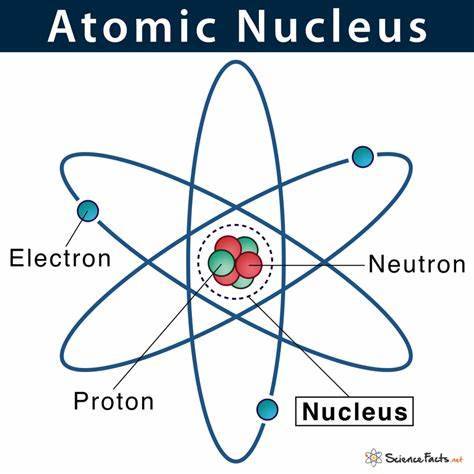
185 notes
·
View notes